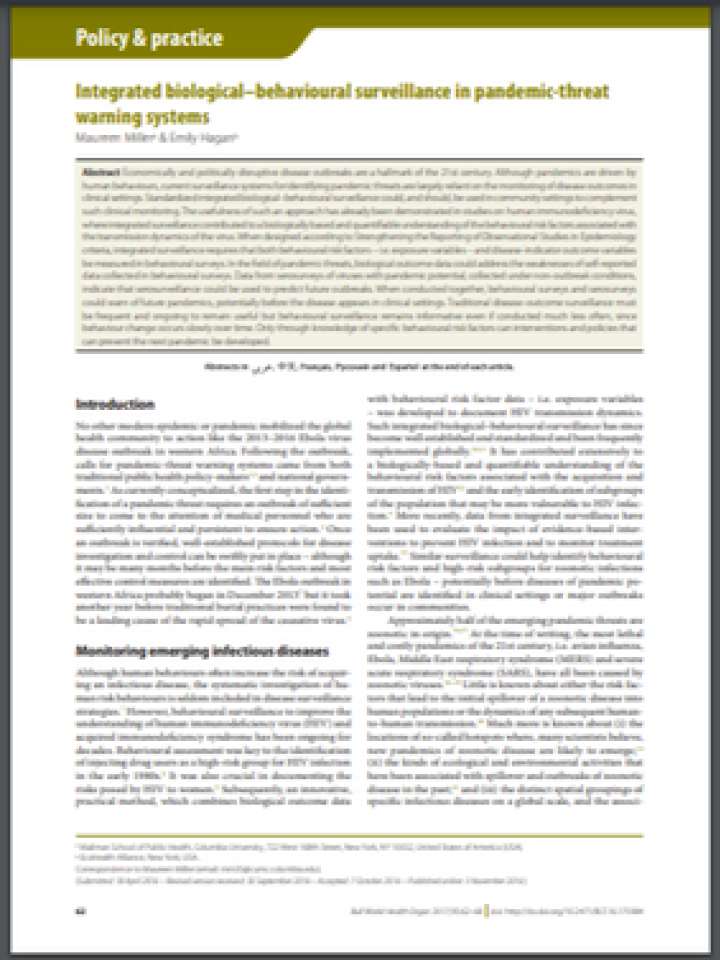Integrated biological–behavioural surveillance in pandemic-threat warning systems
This article presents an overview of issues relevant to the design of rigorous behavioural surveys to assess the spillover of emerging zoonotic disease and the associated transmission risk factors, which is the first step in designing effective integrated surveillance. The authors identified community-based serological surveys of viruses with pandemic potential as a possible source of useful biological outcome data. Further, the authors summarize the results of such serosurveys, conducted in nonoutbreak settings in Africa, and evaluate their usefulness – especially when used in combination with behavioural surveillance – in the prediction of future outbreaks
Current pandemic-threat warning systems rely almost exclusively on disease surveillance in clinical settings. Standardized biological–behavioural surveillance, in which both disease outcome data – self-reported and biological – and behavioural risk factors are measured, would complement traditional surveillance and greatly advance the understanding of behaviours and practices that could be targeted for risk mitigation and, ultimately, for prevention. The implementation of integrated biological–behavioural surveillance need not be frequent to be informative and useful in preventing the spillover of zoonotic agents with pandemic potential.
Explore further
